
Fracastorius is the lava-flooded remnant of an ancient lunar impact crater located at the southern edge of Mare Nectaris. To the northwest of this formation lies the crater Beaumont, while to the northeast is Rosse.

Kane is the walled remains of a lunar impact crater that has been flooded by lava from Mare Frigoris to the south, and it lies on the northeast edge of this mare. The crater lies midway between the craters C. Mayer to the west and Democritus in the east. To the north-northeast is the crater Moigno.

Egede is the remains of a lunar impact crater that has been flooded by lava, leaving only the somewhat polygonal circumference of the rim protruding just above the mare. It was named after Dano-Norwegian natural historian Hans Egede. It is located on the southern edge of the Mare Frigoris, to the west of the crater Aristoteles. To the southwest is an arc of low mountains curving between the rims of Aristoteles and Eudoxus. The floor of Egede is flat and nearly featureless, except for a few tiny craterlets, including secondaries from Aristoteles. The surviving rim has a maximum altitude of 0.4 km above the surface.

Sharp is a lunar impact crater located to the west of the Sinus Iridum bay of the Mare Imbrium, beyond the Montes Jura range. To the southwest is the crater Mairan. Because of its location and foreshortening, Sharp appears elliptical from the earth.
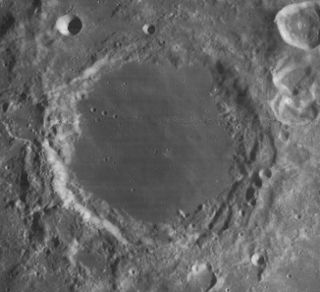
Endymion is a lunar impact crater that lies near the northeast limb of the Moon. It is located to the east of Mare Frigoris and north of Lacus Temporis. To the southwest is the somewhat smaller crater Atlas. Because of its location, Endymion has an oval appearance from foreshortening. Beyond the crater along the lunar limb is the Mare Humboldtianum.

Gärtner is the lava-flooded remnant of a crater in the northeast part of the Moon. It is located on the northern edge of the Mare Frigoris. The southern half of the formation is completely missing, and Gärtner forms a semi-circular basin along the edges of the lunar mare. To the north lies the crater Democritus.

Hercules is a prominent crater located in the northeast part of the Moon, to the west of the crater Atlas. It lies along the east edge of a southward extension in the Mare Frigoris. To the west across the mare is Bürg. To the south is the ruined crater Williams.
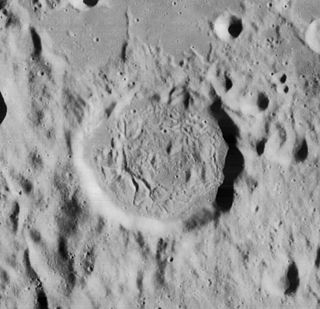
La Condamine is a small lunar impact crater that is located on the southern edge of the Mare Frigoris, in the northern part of the Moon. It lies to the northeast of the mountain-rimmed Sinus Iridum formation in the northwest part of the Mare Imbrium.

Harpalus is a young lunar impact crater that lies on the Mare Frigoris, at the eastern edge of the Sinus Roris. To the southeast at the edge of the mare is the small crater Foucault, and to the northwest on the opposite edge is the walled plain named South.
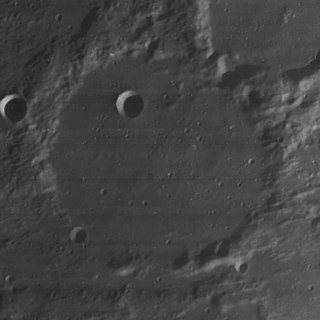
Arnold is a lunar impact crater that is located in the north-northeastern part of the visible Moon, near the lunar limb. This location gives the crater a notably oval appearance due to foreshortening, although the formation is actually relatively round. It lies to the northeast of the Mare Frigoris, to the north of the crater Democritus. West of Arnold is the smaller crater Moigno.

Auwers is a small lunar impact crater located in the Montes Haemus mountain range at the south edge of Mare Serenitatis. It is named after German astronomer Arthur Auwers. It lies southeast of the crater Menelaus. The irregular rim of Auwers has a gap at the north-northwest edge, which allowed lava flows to reach the crater floor and flood the interior.

Birmingham is the surviving remnant of a lunar impact crater. It is named after the astronomer John Birmingham. The crater is located near the northern limb of the Moon, and so is viewed from the Earth at a low angle.

Baily is the remnant of a lunar impact crater on the boundary between Mare Frigoris to the north and Lacus Mortis to the south. The crater interior has been flooded by lava in the past, and only the northern half of the crater rim remains relatively intact. There is an outward bulge in the northeastern rim, possibly the remnant of another crater formation that once overlapped Baily. The crater interior is flat and relatively featureless, with no impacts of significance. The surviving outer rim reaches a maximum elevation of about 0.5 km.

Democritus is a lunar impact crater that is located on the northern part of the Moon, just to the north of the Mare Frigoris. Just to the south of Democritus is the lava-flooded crater Gärtner, which forms a bay on the mare. Directly to the north is Arnold, another flooded formation.
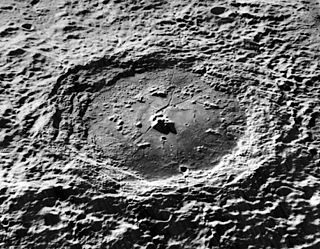
Compton is a prominent lunar impact crater that is located in the northern hemisphere on the far side of the Moon. It lies to the east of the Mare Humboldtianum, and southwest of the walled plain Schwarzschild. To the southeast of Compton is the heavily eroded crater Swann.

Fontenelle is a lunar impact crater that is located along the northern edge of Mare Frigoris, in the northern part of the Moon. To the northeast is the remnant of the crater Birmingham. Due to its location, this crater appears oval in shape when observed from the Earth because of foreshortening.
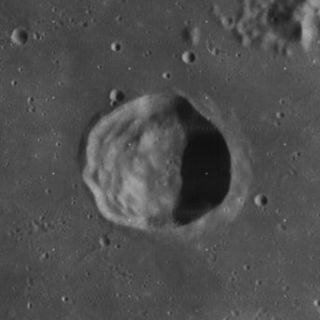
Protagoras is a lunar impact crater that is located on the Mare Frigoris in the northern part of the Moon. To the north-northwest is the slightly larger crater Archytas, and to the southeast is the prominent Aristoteles.

Bouguer is a lunar impact crater that lies along the southern edge of the Mare Frigoris, to the north of the crater Bianchini. To the west-southwest of Bouguer, along the same shore of the mare, is the crater Foucault. Nearly due west is the more prominent Harpalus, and to the west is La Condamine.
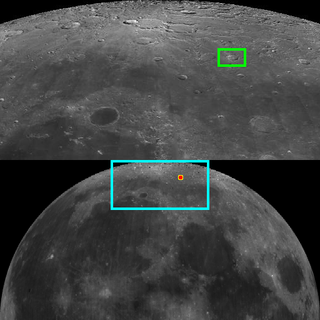
C. Mayer is a lunar impact crater that is located at the northern edge of the Mare Frigoris, due north of the prominent crater Aristoteles. Also to the south, but only a third as distant, is the smaller crater Sheepshanks. Due east of C. Mayer is the flooded crater Kane.

South is a large lunar impact crater that is located in the northwest part of the Moon. Most of the southern wall of this crater is joined to the Sinus Roris bay of the Oceanus Procellarum, with the southeast rim facing Mare Frigoris. Attached to the northwest of the formation is the larger walled plain Babbage. Just to the northeast is the crater Robinson, and farther to the northeast is another walled plain, J. Herschel.
























